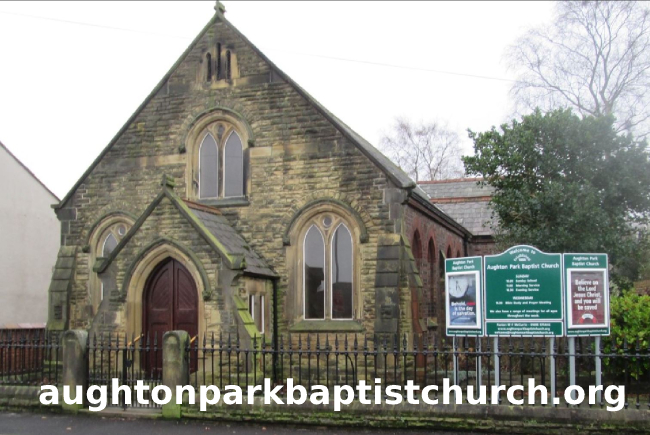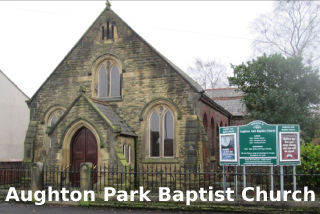Alt-Crossens – an invitation to have your say!
That's the headline on an article from Scarisbrick's John Herbert who knows more than most about the threat posed by a proposed switch off of five key satellite pumping stations next summer.
Our thanks to the editor of the brilliant Scarisbrick Village Matters magazine for permission to print this article from the spring edition which hits the streets this weekend.
'The Alt-Crossens drainage catchment includes most of West Lancashire and contains 39,000 hectares of farmland, considered to be some of the best agricultural land in the country.
It supports thousands of jobs within the county including the agricultural supply industry, packaging and haulage, engineering, food processing and grocery retailing. Infrastructure critical to our local economy crosses the catchment including roads, railways, utility supplies and
telecommunications.
The land in Alt-Crossens is low lying with a good proportion sitting below sea level, including large parts of Scarisbrick. Pumping is used to take water off the land and evacuate it out to sea. Networks of small, manmade watercourses are pumped into higher, larger watercourses by eleven satellite pumping stations.
These in turn are pumped out to sea at the major pumping stations of Altmouth and Crossens. Without this drainage system large areas of Alt-Crossens would return to their original marshy state. This arrangement is very similar to the drainage of the Somerset Levels where we are all aware of the results of poor maintenance.
Central government has reduced spending on flood prevention from £360m to £270m with proportionally bigger cuts in the northwest than the southeast. DEFRA has cut the Environment Agency’s budget by almost one third and instructed that priority be given to protection of homes and commercial premises; protection of land itself is now seen to be a problem requiring local solutions. This policy means that the Environment Agency has to reduce expenditure in areas like Alt-Crossens where it is mainly land (and not homes) that is protected from flooding.
The Agency has now served notice on the first five pumping stations, including those at Boundary Brook and Kew, which help drain land along the A570 in the region of Brown Edge and Pool Hey. Significantly, they will also be withdrawing from watercourse maintenance across the catchment.
The Environment Agency is confident from modelling exercises that there will be no increased risk of internal flooding to residential properties should the pumps be switched off. A discussion of the limitations of such exercises is beyond the scope of this article, save to say that they tend to be based on historical data at a time when intense storms are now no longer isolated events.
However, to focus only on residential property is to take a short-sighted view. Damage to public infrastructure affects a greater proportion of the population than those whose homes or businesses are directly flooded. Flood damage to roads, railways and transport hubs can have significant effects on regional economies. For example, about 5,500 people per day travel from West Lancashire to work in Sefton - about 13% of the working population - a similar number commuting inwards.
Main routes into Sefton include the Southport to Manchester railway, the A570 through Scarisbrick, and the A565 through Mere Brow. These routes all cross the areas where notice has been served on pumping operations.
Economic prosperity depends on what we make and sell, creating jobs and providing taxation opportunities that in turn fuel our public services. West Lancashire’s farmland provides 94% of Lancashire’s fruit and vegetables and 64% of the North West regional total. Land now at risk is critical in maintaining this important sector of the economy and the businesses that depend upon it. For example, the food processing industry converts farm produce into consumer-ready products.
In 2012 this industry was the second largest contributor to Lancashire’s £3.9 billion manufacturing sector, employing over 12,000 people. It is also apparent that our visitor economy is shaped by our rural landscape, employing nearly 5,000 people and generating £112 million for the region.
So what are the available options?
1. Some advocate doing nothing in the belief that this is a problem for a handful of farmers. Nevertheless, the catchment’s 435 registered agricultural holdings support 2,500 jobs in farming, yield about 100,000 tonnes of vegetables annually and form the basis of 11% of all businesses within the Borough.
2. Others wish to persuade the Environment Agency to change its mind. However, it is as an instrument of Government (funded via DEFRA) that exists to implement Government policy. Its course is determined by its political masters.
3. So why not lobby Government to change its mind, after all aren’t they simply transferring the burden of flood protection from general taxation onto the people of West Lancashire? This argument has underpinned West Lancashire Borough Council’s current stance. However, it is based upon an historical anomaly that weakens the point. The Land Drainage Act (1930) allowed for the establishment of Internal Drainage Boards across the country.
These are responsible for drainage within defined catchments and are funded by drainage rates levied on landowners and a special levy on councils at District level (to take account of benefits to the wider population). In the 1980s our River Crossens Drainage Board successfully petitioned to be disbanded with its responsibilities being passed on to the newly formed North West Water Authority and thence onto the Environment Agency. The latter is certainly centrally funded and local tax ceased to fund drainage operations in Alt-Crossens – but this is in complete contrast to the rest of the country where IDB’s continue to exist and are funded through local taxation to this day.
4. Don’t local landowners have the knowledge and means to sort this out? How about forming landowner co-operatives? On face value this is also an attractive option and can work well in small areas with a limited number of partners sharing common interests.
However, the more partners that become involved the greater the chance of losing a cooperative’s most important requirement - co-operation! The Alt-Crossens catchment has grown into a complex monster consisting not only of pumping stations but also hundreds of miles of man-made water channels spread over a multitude of individual land holdings.
It is essential that it is managed holistically and at such a scale co-operatives would lack the necessary governance structure. Indeed, the lesson of history is that lack of cooperation between landowners was a major driver for the Land Drainage Act (1930) and the establishment of IDBs. Such a system is also inherently unfair, the built environments of West Lancashire, Sefton and Liverpool contribute significantly to the amount of water entering the catchment and for which we are all responsible.
5. What about a new Internal Drainage Board for the area? They collectively have a great deal of experience in managing areas of special drainage need and many see this as the way forward. IDB’s are a type of local authority with statutory powers and duties.
They possess a formal governance structure, have local responsibilities, and are accountable to the people they serve. They have the power to raise revenue which allows them to budget and ensures they are sustainable. The principle of funding is that beneficiaries should pay, the majority of funds coming from a drainage tax levied on landowners.
However, as outlined above, the general population of the Borough also benefits from adequate land drainage which would result in a special levy on WLBC (and some neighbouring councils). It is for the Council to decide how this is raised, but the expectation is that it would lead to an increase in council tax.
Scarisbrick Parish Council is keen to learn your views. What do you consider to be the most sensible way forward? Would you support the formation of a local internal drainage board? Would you be prepared to see an increase in council tax to fund land drainage within the Borough?
Please complete the questionnaire and/or comment further on the community website (www.scarisbrick.today) or by contacting the parish clerk: Mr Tom Houghton, 137 Smithy Lane, Scarisbrick, Ormskirk. L40 8HH. Email: scarisbrickpc@outlook.com'
|
|
||||||
|
WANTED: YOUR NEWS AND STORIES FOR ORMSKIRK
Phone / Txt Roger on 0754 3955 841 Email local news to us including image(s) ormskirk@qlocal.co.uk Follow / Report to us on Twitter @QlocalOrmskirk
WANTED: YOUR NEWS AND STORIES FOR ORMSKIRK
Phone / Txt Roger on 0754 3955 841 Email local news to us including image(s) ormskirk@qlocal.co.uk Follow / Report to us on Twitter @QlocalOrmskirk 

Check Todays Deals on Ebay.co.uk Your Comments:
Custom Search

|
You are in:
UK /
Ormskirk / North West
Find any Town in the UK, or Use UK map Local Google MAP for Ormskirk Check Todays Deals On Amazon.co.uk Check Todays Deals on Ebay.co.uk 



Qlocal Supports Woodlands Animal Sanctuary 

 Be Seen - Advertise on Qlocal Corporate Sponsors
Southport Piano and Music Academy Washroom Services Maximum Grounds Maintenance Southport Garden Services Ormskirk Garden Services Sanitary Bins Nappy Bins & Waste Disposal Confidential Shredding Services Legionella Risk Testing London Washroom Services Croydon Washroom Services Hounslow Washroom Services Wandsworth Washroom Services Havering Washroom Services Sanitary Bins London Clinical Waste London General Waste London Legionella Testing London Shredding London Tatoo Waste London Preston Bird Control Blackpool Bird Control
UK, Local Online News Community, Forums, Chats, For Sale, Classified, Offers, Vouchers, Events, Motors Sale, Property For Sale Rent, Jobs, Hotels, Taxi, Restaurants, Pubs, Clubs, Pictures, Sports, Charities, Lost Found
ormskirk,
ormskirk News,
|
|||||
|
|
|
|






 Reply With Quote
Reply With Quote


